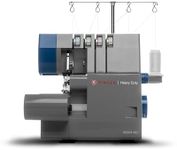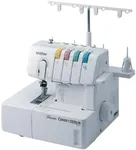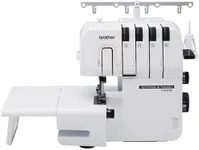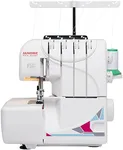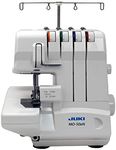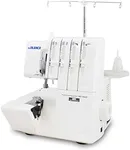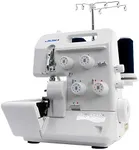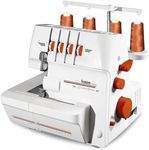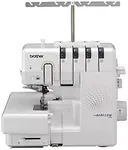Buying Guide for the Best Serger Sewing Machines
Choosing the right serger sewing machine can significantly enhance your sewing projects by providing professional finishes and durable seams. Sergers are specialized machines that sew, trim, and finish seams in one step, making them ideal for various types of fabrics and projects. When selecting a serger, it's important to consider several key specifications to ensure you get the best fit for your needs.Number of ThreadsThe number of threads a serger can use is crucial because it determines the types of stitches and finishes you can achieve. Sergers typically range from 2-thread to 5-thread models. A 2-thread serger is suitable for lightweight fabrics and basic overlocking, while a 3-thread serger is more versatile for general sewing and finishing. A 4-thread serger offers stronger seams and is ideal for knit fabrics, and a 5-thread serger provides the most durable seams, perfect for heavy-duty projects. Choose based on the complexity and durability required for your sewing projects.
Differential FeedDifferential feed is a feature that allows you to adjust the feed dogs to handle different types of fabrics and prevent issues like puckering or stretching. This is especially important when working with stretchy or delicate fabrics. The differential feed ratio typically ranges from 0.5 to 2.0. A lower ratio is good for gathering fabrics, while a higher ratio helps in stretching. If you frequently sew with a variety of fabrics, a serger with adjustable differential feed will give you more control and better results.
Stitch Width and LengthStitch width and length settings allow you to customize the size of your stitches for different sewing tasks. Stitch width usually ranges from 3 to 7 mm, and stitch length from 1 to 4 mm. Wider stitches are better for heavy fabrics and decorative edges, while narrower stitches are suitable for lightweight fabrics and fine finishing. Longer stitches are useful for basting and gathering, while shorter stitches provide stronger seams. Consider the types of projects you plan to undertake and choose a serger that offers the flexibility you need.
Ease of ThreadingThreading a serger can be complex, and ease of threading is an important factor to consider. Some sergers come with color-coded threading guides, automatic threading systems, or lay-in threading, which simplify the process. If you're new to using a serger or prefer convenience, look for models that offer these features to save time and reduce frustration.
Built-in StitchesBuilt-in stitches refer to the variety of stitch types a serger can perform, such as overlock, rolled hem, flatlock, and coverstitch. The more built-in stitches a serger has, the more versatile it will be for different sewing techniques and finishes. If you plan to work on diverse projects, from garment construction to home décor, choose a serger with a wide range of built-in stitches to expand your creative possibilities.
SpeedThe speed of a serger is measured in stitches per minute (SPM) and affects how quickly you can complete your sewing tasks. Sergers typically range from 1,000 to 1,500 SPM. Higher speeds are beneficial for large projects and professional use, while lower speeds may be sufficient for occasional sewing and beginners. Consider your sewing frequency and the scale of your projects when choosing the appropriate speed.
AccessoriesAccessories can enhance the functionality of your serger and make sewing more convenient. Common accessories include presser feet for different stitches, thread cutters, and extension tables. Some sergers come with a variety of accessories included, while others offer them as optional add-ons. Think about the types of projects you will be working on and choose a serger that comes with or supports the accessories you need.
